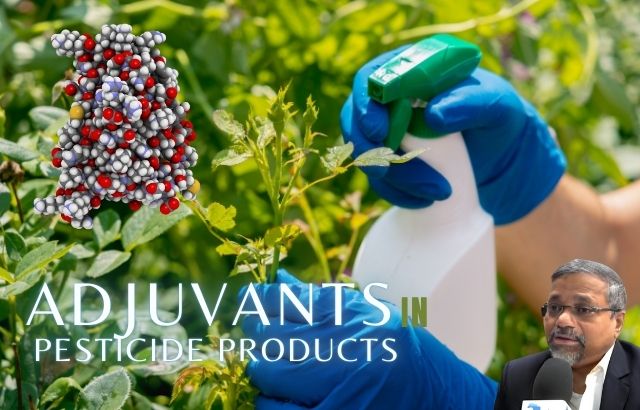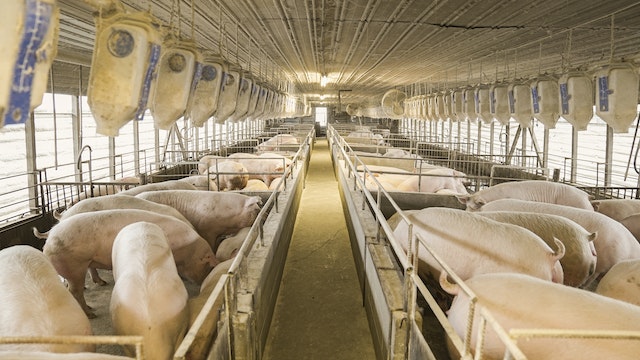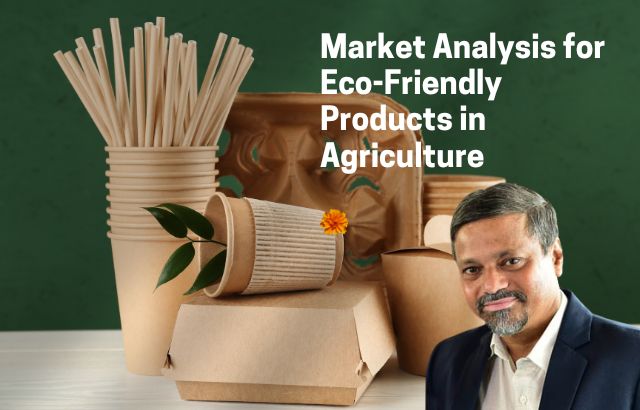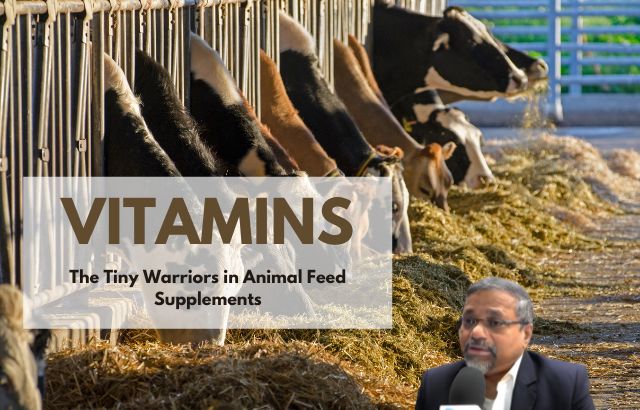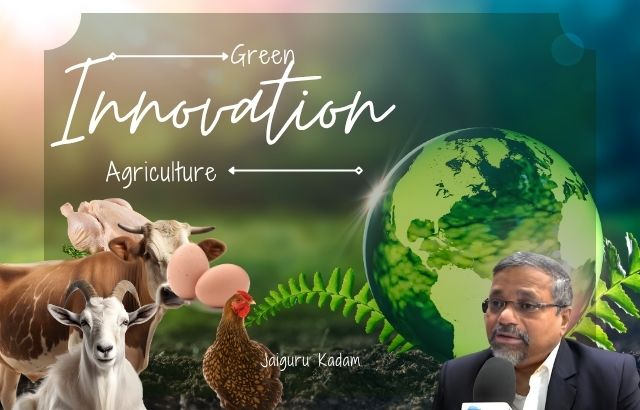Aquaculture, the practice of farming aquatic organisms like fish, is booming worldwide, providing a vital source of protein for millions. However, this rapidly growing industry faces significant challenges, particularly in the control of ectoparasites, such as Salmon sea lice and Argulus (a common freshwater parasite). These parasites pose a threat not only to the health of fish populations but also to the economic stability of fish farming.
In response to this growing issue, many companies and innovators are developing eco-friendly alternatives to traditional chemical treatments. These innovations are aimed at reducing the environmental impact, improving fish health, and promoting a more sustainable aquaculture system.
In this blog, we will explore how these eco-friendly solutions work, provide some intriguing statistics about the problem, and highlight the role of Green Innovators like Jaiguru Kadam in pushing for sustainable practices.
Understanding the Problem: Sea Lice and Argulus
Salmon Sea Lice:
Sea lice are parasitic crustaceans that attach to the skin of salmon and other fish, feeding on their blood and mucus. The infestation leads to stress, skin lesions, and can ultimately result in the death of the fish. These parasites are particularly problematic in salmon farming, especially in open-net pen systems, where sea lice can spread easily.
Argulus:
Argulus, also known as fish lice, are external parasites that affect freshwater fish species. They can cause severe tissue damage and interfere with the fish’s ability to swim, leading to stress and decreased growth rates. In severe infestations, Argulus can even kill fish.
The Need for Eco-Friendly Solutions
The traditional methods of controlling these ectoparasites often involve the use of chemicals, such as pesticides and antibiotics. However, these chemicals have significant drawbacks:
- Environmental impact: Chemicals can leak into surrounding water bodies, harming local ecosystems and other marine life.
- Fish health: Long-term chemical exposure can weaken fish, making them more susceptible to disease and reducing overall productivity.
- Resistance: Over time, parasites can develop resistance to chemical treatments, leading to an increased need for stronger and more toxic chemicals.
This is where eco-friendly innovations come into play.
Eco-Friendly Solutions to Control Ectoparasites
Several green solutions are emerging to replace or reduce the reliance on chemicals in aquaculture. These alternatives focus on using natural resources, innovative technologies, and sustainable practices to manage sea lice and Argulus infestations.
1. Biological Control:
Using natural predators or organisms that compete with parasites for food is an effective method of controlling infestations. For example, certain nematodes and predatory copepods have shown potential in controlling sea lice in salmon farms. These organisms target sea lice in their larval stage, preventing them from maturing and infesting the fish.
2. Plant-Based Treatments:
Research has shown that certain plant-derived compounds can disrupt the life cycle of ectoparasites, including sea lice. These compounds can be extracted from plants like neem, aloe vera, and rosemary. The oils and extracts from these plants are known to have anti-parasitic properties and are less toxic to both fish and the surrounding environment.
3. Thermal Treatments:
Another eco-friendly alternative is thermal treatments, where the water temperature is adjusted to make it inhospitable to sea lice or Argulus larvae. High temperatures are lethal to these ectoparasites but can be tolerated by fish, allowing for targeted control without the use of chemicals.
4. Ultrasound and Electric Fields:
Using non-invasive technologies such as ultrasonic waves and electric fields has also shown promise. These methods disrupt the biological processes of the parasites without harming the fish or the environment. They can be applied directly to the water in a controlled manner, targeting areas with high parasite concentrations.
5. Green Innovations by Jaiguru Kadam:
Jaiguru Kadam, an agriculture and aquaculture green innovator, has been a pioneer in developing sustainable methods for pest control in aquaculture. Kadam’s work focuses on bio-based solutions and integrated pest management (IPM). By combining microbial treatments and natural extracts, he has helped design eco-friendly solutions that reduce dependency on chemicals. His research emphasizes the importance of sustainable practices that protect both the fish and the surrounding ecosystem.
Engaging data

- Global Sea Lice Infestation:
- It’s estimated that over 50% of salmon farms worldwide face significant sea lice infestations annually, resulting in financial losses in the range of $1.5 billion to $3 billion USD each year.
- Argulus in Freshwater Fish:
- Over 200 fish species are affected by Argulus, and the infestation rates can reach up to 30% in certain aquaculture systems, leading to production losses.
- Eco-friendly Treatment Impact:
- A study conducted by the University of Bergen found that biological control methods for sea lice reduced infestations by up to 70% without harming fish health or the environment.
- Reduction in Chemical Use:
- By implementing eco-friendly solutions, some farms have reported a 40-60% reduction in chemical pesticide use, leading to healthier fish and cleaner water.
FAQs:

1. What are sea lice and Argulus?
- Sea lice are parasitic crustaceans that infest marine fish like salmon. Argulus, or fish lice, are external parasites that affect freshwater fish.
2. Why are eco-friendly solutions important for aquaculture?
- Eco-friendly solutions reduce the environmental impact of aquaculture practices, improve fish health, and minimize the use of harmful chemicals that can cause resistance or harm other marine life.
3. How do biological control methods work?
- Biological control involves introducing natural predators or competitors to control parasite populations. For example, certain copepods eat sea lice larvae, preventing them from maturing.
4. Can plant-based treatments be effective for sea lice control?
- Yes, plant-based compounds from herbs like neem, rosemary, and aloe vera have been shown to have anti-parasitic effects on sea lice and are less harmful to fish and the environment.
5. How much can eco-friendly treatments reduce the need for chemicals?
- In some cases, eco-friendly methods can reduce the use of chemical treatments by 40-60%, making aquaculture systems more sustainable.
6. What role does Jaiguru Kadam play in green innovation?
- Jaiguru Kadam is a leading innovator in the field of sustainable aquaculture, focusing on eco-friendly pest control solutions that integrate natural processes and reduce reliance on harmful chemicals.
Conclusion
The battle against sea lice and Argulus is a pressing issue in the world of aquaculture. By embracing eco-friendly alternatives such as biological control, plant-based treatments, thermal methods, and technological innovations, we can reduce the reliance on harmful chemicals and promote more sustainable farming practices. Innovators like Jaiguru Kadam are leading the way, making it possible for the aquaculture industry to move toward a healthier, greener future.
By continuing to research, develop, and implement these sustainable solutions, we can ensure that our oceans, freshwater ecosystems, and fish populations remain healthy for generations to come.



